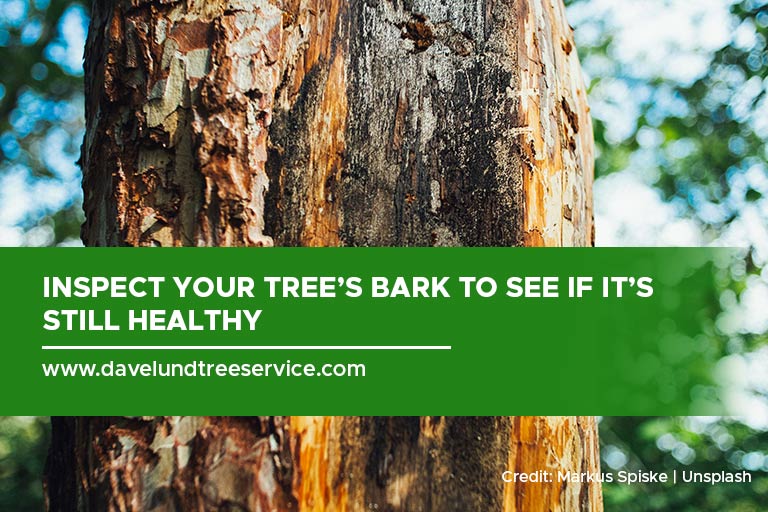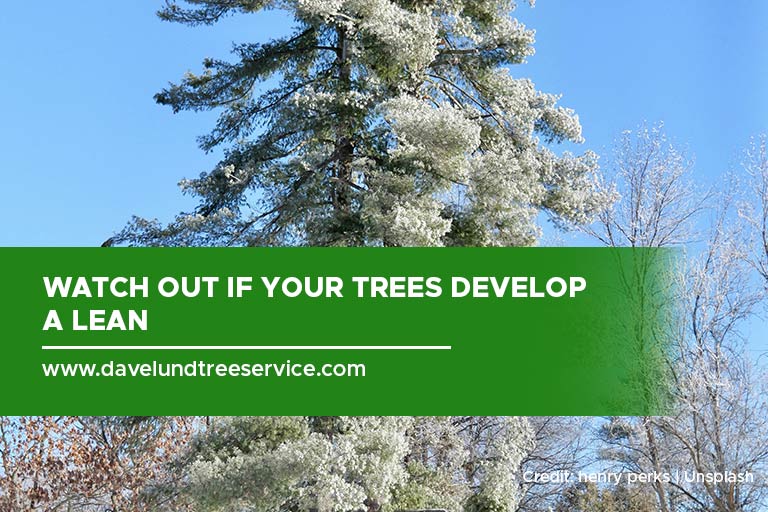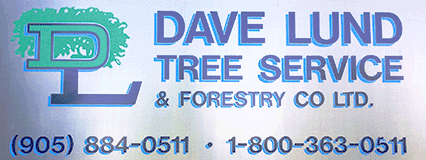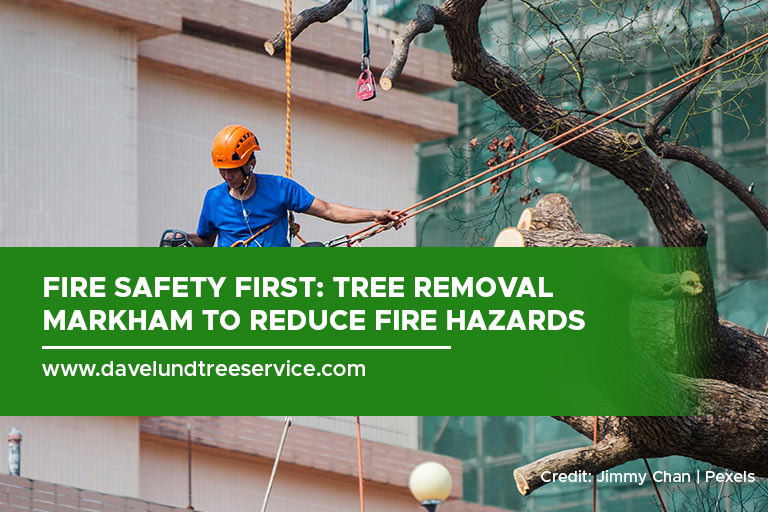Having trees around your home can be a great way to increase curb appeal and make your property look more beautiful. However, these beautiful assets can also pose a significant fire hazard if not properly maintained. Tree removal in Markham may seem drastic, but it’s a crucial step towards safeguarding your property and your loved ones. Read on to learn about the telltale signs of a fire-prone tree and find out what you can do about it.
Understanding Fire Risk in Trees
Trees are susceptible to fire due to their combustible components: leaves, branches, and deadwood. These elements act as fuel, readily igniting and spreading flames. The risk intensifies during dry seasons or hot summers when leaves become parched and easily catch fire. Furthermore, dead branches hanging low or leaning towards structures create dangerous fire ladders, allowing flames to quickly reach your house.
Signs Your Markham Tree Poses a Fire Hazard
Trees are living organisms, and like all living things, they can weaken and become susceptible to fire hazards over time. Being vigilant and taking action is vital to prevent a potential disaster. Here’s a closer look at key signs that indicate you need to remove your tree:
Dead or Dying Branches
These branches are the most immediate fire concern. They lack moisture, making them brittle and prone to snapping under their own weight or during strong winds. A single fallen branch can easily land on your roof, creating an entry point for embers or a direct path for flames to reach your home. Look for these warning signs:

Cracked or Peeling Bark
Healthy branches have a smooth, unbroken bark. Cracks and peeling indicate internal damage and potential decay.
No Leaves
While some trees naturally lose leaves in winter, year-round bare branches on a living tree suggest a lack of vitality and potential death.
Brittle Snap
If a branch snaps easily with minimal pressure, it’s a strong indicator of dryness and a fire hazard.
Diseased Trees
A compromised immune system makes a tree more susceptible to insect infestation and fungal growth. These factors weaken the tree structure, increasing the risk of branch breakage and fueling a potential fire. While diagnosing a disease requires a professional arborist, there are some general signs to watch for:
Yellowing Leaves
Healthy leaves are typically green. Widespread yellowing, especially outside of fall, can indicate a disease or nutrient deficiency.
Wilting
Wilting leaves and drooping branches are signs the tree is struggling to absorb water and nutrients.
Unusual Growths
Fungi often manifest as mushrooms or bracket-like structures on the trunk or branches. These growths are a sign of decay and weakening.
Excessive Deadwood
While some deadwood is natural, a significant amount indicates the tree is deteriorating and needs attention.

Leaning Trees
A tree with a significant lean towards your home or power lines poses a double threat. These trees are more likely to fall during strong winds, potentially causing significant damage:
Property Damage
A falling tree can crush your roof, damage siding, or break windows, leading to expensive repairs and potential injury.
Power Line Sparks
If a leaning tree falls onto power lines, it can cause sparks that ignite nearby dry leaves or branches, escalating into a major fire.
Limited Escape Routes
In an emergency, a fallen tree can obstruct doorways and windows, making it difficult to evacuate your home safely.
Arborist’s Assessment
While a slight lean might not be a cause for immediate concern, a significant lean necessitates a professional assessment by a certified arborist. They can determine the cause of the lean and recommend the safest course of action.
Low-Hanging Branches
These branches create a direct pathway for flames to reach your roof or siding, significantly increasing your fire risk. They also obstruct access for firefighters in case of an emergency:
Roof Fires
Low-hanging branches can easily lodge on your roof during strong winds. These branches become tinder, allowing embers from nearby wildfires or even a discarded cigarette to ignite your roof. Regular pruning is essential to maintain adequate clearance between branches and your home.
Firefighter Access
Densely packed branches or those overhanging walkways and doorways can impede firefighters from quickly reaching a burning building. Keeping branches trimmed ensures a clear path for emergency responders.
Fire-Prone Species
Certain tree species are inherently more flammable than others. Knowing the species of your trees and researching their fire risk is crucial. Here are some examples of fire-prone trees commonly found in Markham:
Conifers
These evergreen trees, such as pines and firs, contain a high resin content in their needles, making them readily ignite and burn intensely.
Eucalyptus
While fast-growing and popular for their fragrant leaves, eucalyptus trees have volatile oils in their leaves and bark that readily catch fire.
Paper Birch
The thin, papery bark of these trees is highly flammable, especially when dry.
By being aware of these signs and taking action when necessary, you can mitigate the fire risk associated with trees on your Markham property. Remember, a proactive approach to tree care is an investment in the safety of your home, your family, and your community.
How Fire-Prone Trees Put Homeowners at Risk
Ignoring the warning signs of a fire-hazardous tree can have devastating consequences. Here’s how these trees endanger homeowners:
Roof Damage and Fire Spread
Dead branches and low-hanging limbs can easily lodge on your roof during strong winds. These branches become tinder, allowing embers from nearby wildfires or even a discarded cigarette to ignite your roof.
Power Line Sparks
Overgrown branches can come into contact with power lines, causing sparks and potential electrical fires. These sparks can easily ignite nearby dry leaves or branches, quickly escalating into a major fire.
Blocked Escape Routes
Fallen branches or leaning trees can obstruct doorways and windows, hindering escape in case of a fire. They can also pose a danger to firefighters trying to access your burning home.
Elevated Insurance Costs
Insurance companies may view fire-prone trees as a risk factor and increase your homeowner’s insurance premium. Removing such trees can improve your property’s safety rating and potentially lower your insurance cost.
Taking Action: Tree Removal in Markham
If you suspect a tree on your property poses a fire hazard, take action right away. There are always a few things you can do to minimize the risk of fire at home. Here are a few steps you can take to ensure your safety:
Consult a Certified Arborist
A certified arborist is a tree care professional with the expertise to assess your tree’s health and fire risk. They can recommend the best course of action, whether it’s pruning, maintenance, or removal.
Obtain Permits (if Necessary)
Depending on the size and location of the tree, you might need a permit from the City of Markham before removal. A certified arborist can advise you on the permitting process and complete any necessary paperwork.
Hire a Reputable Tree Removal Company
Tree removal is a complex task that requires specialized equipment and skilled professionals. Hire a reputable company with experience in safe and responsible tree removal. Ensure they are insured and have a proven safety record.
Trees are undeniably beautiful and contribute significantly to your home’s character. However, fire safety should never be compromised for aesthetics. By understanding the telltale signs of a fire-prone tree and taking decisive action, you can safeguard your property and your loved ones. Remember, you don’t have to wait for Fire Prevention Week to start proofing your home against fire. A proactive approach to tree care is an investment in your safety and peace of mind. Consider tree removal in Markham not as a drastic measure, but as a responsible step towards creating a fire-resilient haven for yourself and your community. Together, we can ensure Markham’s vibrant green canopy continues to thrive safely for generations to come.
When it comes to a reliable arborist, you can’t go wrong with Dave Lund Tree Service & Forestry Co. Ltd. With over 40 years of experience, we have ample expertise helping clients with their tree-related issues and leaving them satisfied. Whether you need tree removal or pest control for your trees, we’ve got the training and tools to help you. Give us a call now at (905) 884-0511 to give your trees the TLC they need.

